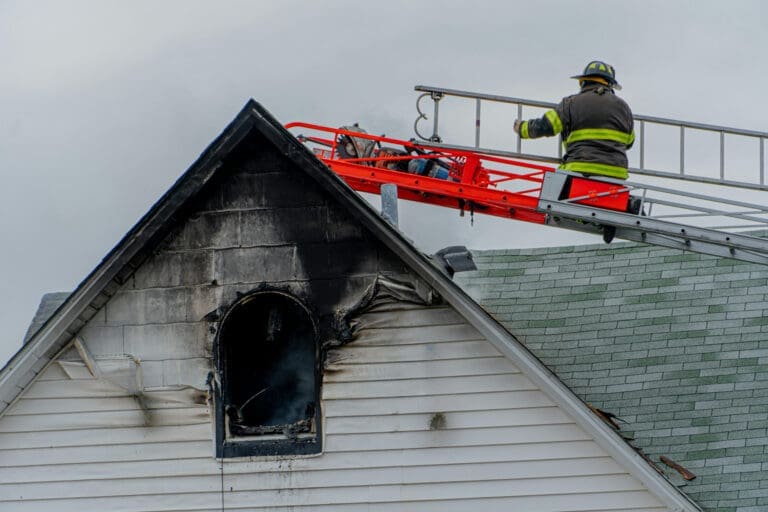Buying a home is one of the biggest financial commitments most people will ever make. Yet, while buyers often focus on location, interest rates, and monthly bond repayments, many overlook the fact that they need insurance cover as a condition of their bonds, says John Wessels, Executive for Product and Analytics at BetterSure.
There are three main types of insurance every homeowner should consider: homeowner’s (building’s) cover, which is mandatory, life insurance, and home contents insurance.
Building’s insurance
“When you take out a home loan, homeowner’s cover – sometimes called building’s or home structure insurance – is mandatory,” says Wessels. “It protects the physical structure of your property against unforeseen risks such as fire, floods, and other disasters. Banks require home structure insurance when you apply for a bond as the structure is collateral for the loan.” This insurance covers everything that is “attached to the structure” of the home, he adds. It may feel like a “grudge” spend each month, but when one considers that it can cost up to R14 000 to replace a geyser – and in South Africa around 10 000 geysers burst each month – the value of this insurance cannot be ignored, says Wessels. Globally, insured losses reached $135 billion in 2024.
However, this type of cover is often misunderstood by homeowners who think that they can claim for anything that goes wrong with the property. “The purpose of homeowner’s cover is to restore your property to the same condition it was before an unplanned event occurred. It is not to claim for the costs of renovating or upgrading a property”, says Wessels.
Wessels adds that homeowners should review their homeowner’s cover regularly to ensure that it keeps pace with the property’s current replacement value. “We often see that people are underinsured. They may have bought a property for R1.5 million and insured it at that value. But a few years later, it could cost close to R2.9 million to replace because of building inflation. Homeowners must ensure that their homes are insured at its replacement value and not market value.” Furthermore, adjustments to the home – such as adding a solar system or the installation of a swimming pool – will add to its value. “If the homeowner does not inform the insurer of these changes, they run the risk of being underinsured. It is estimated that one in three homes in South Africa is underinsured.”
Prepare for the unexpected

Although not always mandatory, life insurance is essential for safeguarding your financial investment, says Wessels. “Many South Africans don’t understand that life insurance is one of the most important covers to have if you have a bond.” Unfortunately, South Africans are “completely underinsured”, says Wessels. In 2021, the national life insurance gap was estimated at R34.4 trillion according to the Savings and Investment South Africa (ASISA) – which is the amount South Africans would need to protect their families in the event of death, disability or critical illness. ASISA estimates that the average South African needs cover of around R1.8 million in the event of death. Those who do have life insurance, generally have cover for no more than R800 000.
Life insurance offers cover in the event of death, disability, critical illness or retrenchment. “Without it, if the homeowner dies, there is a risk of the family being left destitute if they cannot continue the bond repayments.” Life insurance is often not a condition set by banks before granting a bond, but it’s worth having, insists Wessels.
He adds that homeowners should consider opting for whole life insurance, rather than the more affordable credit life insurance option. Whole life insurance cover means that even though the outstanding bond amount decreases with each payment, the payout in the event of death will remain at the full amount it was when the insurance cover was taken out. “This life cover ensures your bond is paid off if you die, and will cover your bond payments for a period if you become disabled, are diagnosed with a critical illness, or even face retrenchment, depending on your policy,” he explains. “It’s about ensuring your loved ones aren’t left with a massive financial burden should something happen.
With credit life insurance, the cover decreases in value as the outstanding bond amount is reduced over time. “Credit life insurance might sound like it’s enough, but it’s usually very limited. Whole life insurance keeps you covered for the entire bond term and beyond and offers much broader protection.” People underestimate the many unexpected costs that arise after a death. Transferring the property into another person’s name, for example, comes at a cost.
Wessels also emphasises the importance of having a will in place when buying a home. Potential buyers should understand that an Offer to Purchase is a legally binding document and should they die before the sale has gone through, their family could still be liable for the bond. Together, a will and life insurance will provide peace of mind that a family will not be left without the financial means to honour the bond should the homeowner die. “The will ensures that the home will go to the correct people, while life insurance will enable them to cover the bond and any other financial obligations.”
Contents cover
While an optional insurance for homeowners, home contents insurance is an important safeguard for personal belongings against theft, fire or damage, explains Wessels. This covers personal belongings inside your home – furniture, electronics, appliances, jewellery etc. Natural disasters, crime, and unexpected household mishaps are more common than many realise.
Insurance misconceptions
Wessels says many homeowners mistakenly believe they are obliged to use their bank’s insurance. “You’re under no obligation to take the bank’s insurance, and you can often find more affordable or comprehensive cover elsewhere,” says Wessels.
It’s also a mistake to view insurance as an “afterthought” when buying a home, adds Wessels. “Insurance should form part of your bond and affordability calculations.” First-time buyers often forget to budget for insurance premiums. They think about how much they need for a deposit and whether they can afford to pay the bond each month. “However, buying a home is about more than just meeting the bond repayment. Insurance is part of responsible homeownership and should be factored in from day one.”
In times of financial strain, insurance is often the first expense people cut – often at great cost in the long term. In 2024, ASISA reported that over 2 million risk policies lapsed. “Real estate agents and bond originators have a responsibility to emphasise the importance of these insurances. If a fire or flood wipes out your home, it can take up to 17 years to recover those costs.”
Premiums
Premiums for life insurance are typically lower for younger applicants and are influenced by factors such as gender, smoking status, level of income, and education level. Whole life insurance is generally more expensive than credit life insurance because with credit life insurance, the level of cover reduces as your outstanding bond amount reduces.
The cost of home structure insurance will depend on the location of the property, amongst other factors. A home built below the floodline will be at greater risk of flooding, and this will affect the insurance premium. In areas prone to extreme weather, such as KwaZulu-Natal which has been affected by flooding in recent years, homeowners may have to pay higher premiums. Structural factors also play a role, says Wessels. Many insurers will not cover homes with thatched roofs, for example, because of the higher fire risk.
BetterSure’s HealthyHome Rewards™
To help homeowners save while protecting their properties, BetterSure Financial Consultants offers up to 30% off premiums through its HealthyHome Rewards™ programme – an industry first. “Clients can enjoy a discount, for example, if they get their free property condition report with tips on keeping your home in the best possible condition, installing a geyser drip tray, and for making use of the complimentary will-drafting service,” Wessels explains. By uploading images of their home, homeowners can apply via WhatsApp for a convenient home condition evaluation.
“Buying a home is a long-term responsibility. The right insurance prepares you for the unexpected, and ensures that your home and family are protected,” Wessels concludes.

